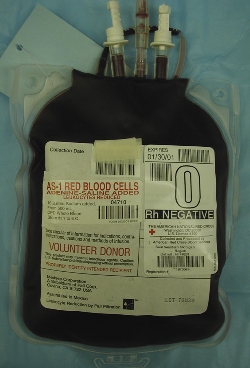http://www.youtube.com/watch?v=3pO2mdVpN20
We rarely think about it. If we did, we’d probably lose our marbles.
But it’s true.
The universe doesn’t care.
We are born, we live for a little while, and eventually, we die. In the duration, we will have hopes and fears, passions, desires, successes and defeats, joy and pain. The whole gamut is out there. And as a rule, the inexorable pull of the world is downward — into darkness, into chaos. Scientists call it entropy. We just call it life.
But it means that at any given moment, if we want to be happy — comfortable, fulfilled, free from suffering — we have to be waging a constant battle. If we ever stop paddling, we start to sink.
There’s a certain point in your youth (maybe this is the moment that you become an adult) when you realize this battle is nobody’s but your own. When you’re a child, your parents agree to fight in your ranks until you can walk and talk and drive a car. But once you step out onto the world stage, the only one wearing your colors is you. As self-centered people, we find this hard to believe; we feel like we’re important players in the grand scheme. But the truth is that although everybody else feels the same way about themselves, they certainly don’t feel the same way about you.
Nobody cares about your problems like you do. Not even remotely close. They’re busy with their own battles, which are just as burdensome to them as yours to you. So we learn that if we want to solve our problems, change our circumstances, or just keep from backsliding in the constant undertow of life, we’re on our own. The tools we bring to the table are the only ones available, and our to-do list has only our name at the top. There is no oversight, unless we have strong religious views; no referee ensures that the dice land fair; and if the game proves too difficult, we don’t get to quit and try another.
Isn’t this horrible?
Of course it’s horrible. What could be more horrible than to be utterly alone in an uncaring universe?
So we try to build ties. From the little twirling piece of driftwood we’re clinging to, we throw out ropes to the other flotsam and jetsam. We bring them close and tie knots in the hope of building a raft that can stay afloat during the next storm. Maybe this way, we think, if I capsize, someone will pull me back in.
This is hard work, though. Because our own problems are bad enough, and to tie ourself to someone else means we’re taking on some of theirs, too. It means when they get hit, it’s our job to try and keep them afloat. That’s a lot of responsibility, and our plate was already full to begin with. (Everybody’s plate is full, no matter how big it may look from the outside.) So at the best, we only make a few really strong ties.
Oh, we might have a lot of weak ones. Folks we know, and who will occasionally drift by to exchange favors or chat. Maybe a group that we’ll cruise with for a while. But make no mistake: they might be floating alongside us, but they haven’t tied any knots in that rope. If you start to founder, the best you can hope for is a little sympathy as they sail on ahead, and maybe toss you a spare life preserver. It’s not their problem.
The ones who really throw in their lot with you — who say that in thick or thin, in sickness or health, they’ll be at your side, fighting to keep you afloat — they’re few and far between. Maybe a little family, one or two close friends. A significant other. That’s all.
What do you think happens when you get older?
If you have the good fortune to live to a very old age, then a lot of things will change. Life is not going to suddenly become easy; if anything, it will become harder. And where are those ties you’ve built?
Dead. Moved away. No longer capable of anything more than clinging to life.
The luckiest among us will make it to the very last pages of life with our partners-in-crime still at our side. The spouse of fifty years, the close and loving family, the lifelong friend. But for most of us, these lifelines are lost over the years, one by one. And eventually, we may have nobody. Nobody to fight for us, to love us, or even to note our passing.
The next time you transport the 80-year-old man with dementia, who never seems happy and complains about everything —
The next time you’re called to the home of the little old lady with toe pain, whose husband died recently after a lifetime spent together —
The next time you pick up the same homeless man from under the bridge, drunk once again —
Try to imagine what it would be like to be truly alone.
Nobody to lean on. Nobody to throw you a rope when you start to founder. Most of all, nobody who gives a damn you exist. Imagine what it would be like to know that you could walk into the sea tomorrow and nobody would even know you’d died — let alone that you’d lived.
We can’t be everything for these people. But one day, hopefully not soon, you might just find that you’ve become one of them. So do what you can, knowing that nobody else is likely to. Knowing that, even when it has little effect, the difference between having somebody to fire a few shots for you, and having nobody — can be all the difference in the world.



Recent Comments